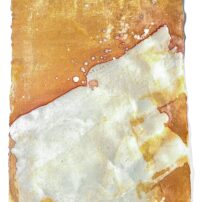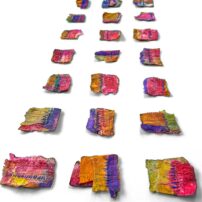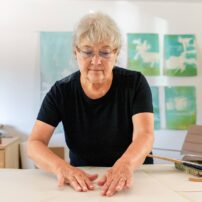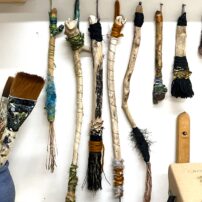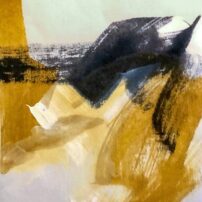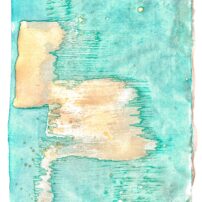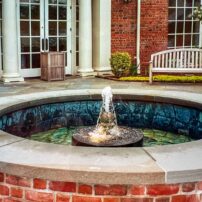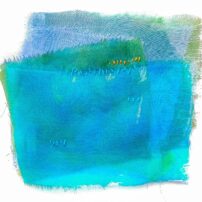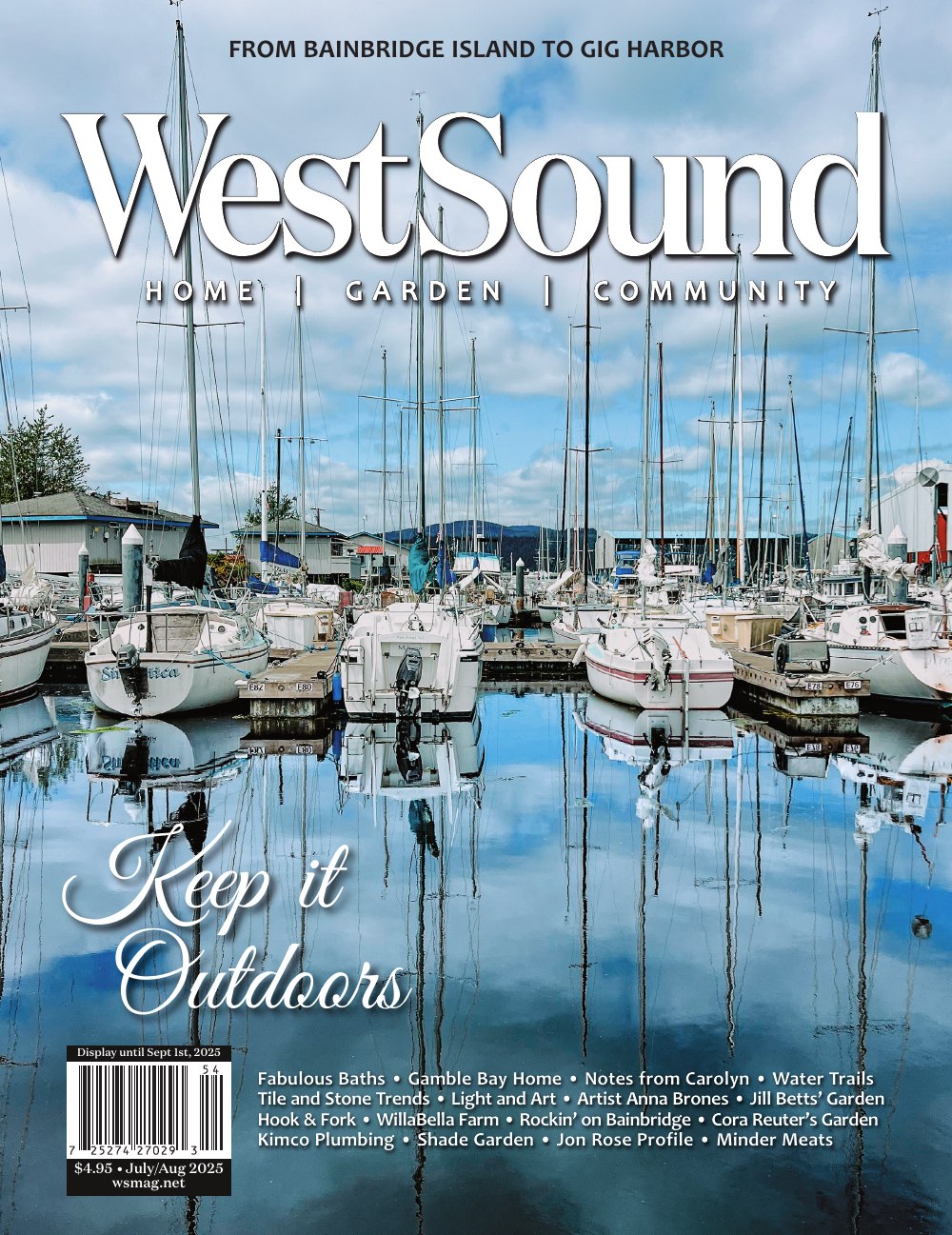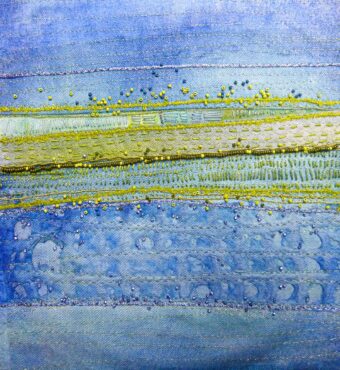
Creativity is in each of us, but sometimes we must find our way to it.
It may seem unlikely that a bank examiner who is required to use her skills of exactness, ensuring that banks are complying with laws, attention to detail in studying documents, and reviewing policies and procedures would be able to tap into her innate creativity, but Roberta Wagner did.
These days, living in Gig Harbor, with a view of Puget Sound, she wakes early, around 4 a.m., steps into her slippers and walks out her door across the one-lane driveway into her studio. It used to be a shed and she transformed it into exactly what she needed.
Wagner said that she has always been a visual person, drawn to beautiful gardens, colors and art. Her relationship with art has been deep, shifting from one medium to another, and her work includes large ceramic pieces, paintings with sweeping strokes and small mixed media collections. She has explored a number of mediums and now describes herself as a mixed media artist.
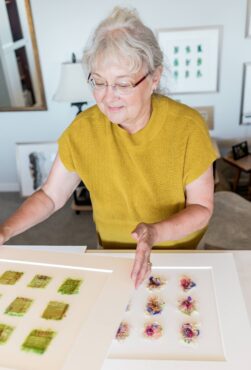
She grew up in Minnesota and earned her degree in international relations with a concentration in economics from Hamline University in St. Paul and a master’s degree from the Institute of Transpersonal Psychology. It was after a visit to the Metropolitan Museum of Art, where she viewed the Vincent van Gogh sunflower paintings in 1987 at an exhibit, that she had a desire to create. Wagner said she was moved to tears. She wanted to be able to do just one painting that was as good.
Fluorescent lights, boring walls and stacks of papers weren’t inspiring her, and she longed to spend time doing something that made her happy. She had been working in that environment for years in Minnesota, the Dakotas and Wisconsin, then moved to Washington, D.C., and later New York, still working as a bank examiner. While living in New York, Wagner heard about a school that connected body, mind and soul, and was drawn to it.
For two years, Wagner commuted from New York to Philadelphia each weekend to study with Jean Houston at her Mystery School. Immersed in creativity with interesting people while sharing dance, song, writing, contemplation and discovery, Wagner learned more about herself and found new ways to interpret the events of her own life.
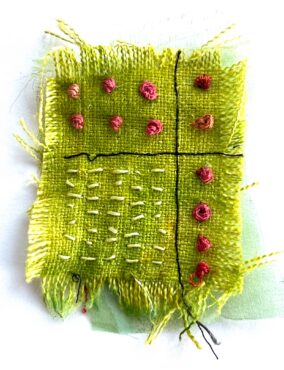
A friend encouraged her to take a pottery class and Wagner’s journey as an artist began to take hold. Making art is something that she acknowledges takes vulnerability and courage. She studied with Vally Passony, a master potter from Vienna, Austria, who believed that pottery should be functional. As Wagner became more skilled while learning under Passony, she began to tire of the functional pottery that she was making and longed to create something else. She wanted to work with glaze and expand to nonfunctional, abstract ceramics. But she hesitated to disappoint the master. So instead, she got some paper and began to create large, abstract paintings. Wagner said that abstract art feels universal.
Finding her way in that new medium was tricky, but the accidents helped her find something special. Boldly, by washing a painting that she didn’t like in a shower, Wagner discovered small gems from that painting, cut it up and thus began her love for small pieces. Small pieces are still where she finds inspiration and a focus for detail whenever she feels stuck. Eventually Wagner had work that she wanted to share and mustered up the courage to show some of her paintings to her mentor, Passony. She approved.
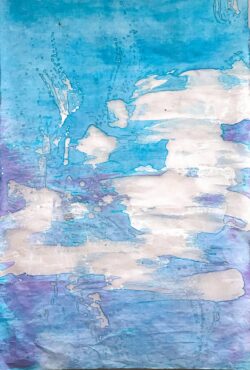
After Passony died in 1994, Wagner began making large ceramics and garden focal points. She was still working in the banking industry and making architectural ceramics, but said that those became too much like work for her. She had created a large fountain for the Lewis Ginter Botanical Garden in Richmond, Virginia, and after that piece, she made the decision to do something for herself.
While the glazed pieces were satisfying to her creatively, working with the glaze began to affect her health. Though she said she’s in full remission, Wagner believes that those chemicals contributed to a diagnosis of lymphoma.
“I couldn’t be around the glaze chemicals anymore,” she said. “I fell in love with textiles and I love texture in art. Painting can feel too flat to me, so I started doing collage and mixed media.”
So, Wagner once again changed mediums in 2014 and said goodbye to her relationship with clay for good. She swept up the dust, sold her kiln and other equipment and embraced soft yarns, vibrant silk, tiny glass beads, interesting papers, threads, linen and wool. Some of the stitching on her abstract mixed media creations are done by hand, others with her sewing machine.
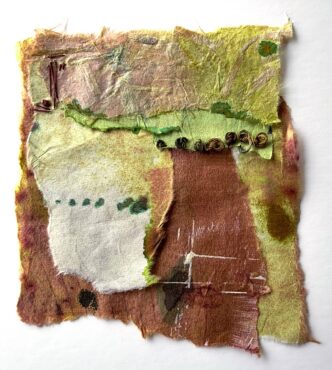
Inspiration for her comes from open spaces, sky and fields. Other artists, a list that is very long, also inspire her. Trusting herself and the process, mixing playfulness and intuition are the combinations that help bring a piece together rather than trying to force an idea. Doing so has helped Wagner bring forth unexpected beauty and discover new techniques, like cutting stitched pieces apart and stitching them together again in a different way.
She was still working as a banking consultant and her art journey was continuing, growing and changing when Wagner began to wonder to herself why she was doing it. What was she getting out of making art?
For 10 years, she explored the question of why she wanted to create. She wrote morning pages, which is a practice that author Julia Cameron encourages and shares in her book, “The Artist’s Way.” Wagner spent time going over the events of her life and began to put together a book of her own, one that answered the question. She said it took her 10 years or more to write her book, “Come Walk With Me: Exploring Why Art Matters,” and she self-published it in 2021.
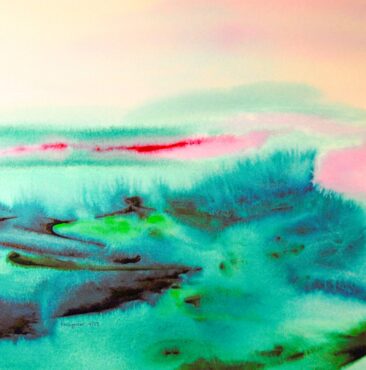
The book is filled with the stories of Wagner’s creative discoveries and the highs and lows of life. Vivid photographs of her artwork, from the early days of pottery to her current collections of mixed media, small pieces as well as larger ones accompany the text. Her collages of paper, layers of different textiles and threads that she hand-dyes and glass beads have been a focus for 10 years, she said. Nature, the connection of humans to it and the beauty of it are all represented in her pieces.
Abstract landscapes not only showcase Wagner’s eye for color and composition but tell a story. Whether it’s a timeline of life titled “A Long Life,” created from layers of botanically dyed wool, silk and linen with stitch, or another piece that hangs in her home and showcases the seasons, Wagner said that she doesn’t like any of her art to be too literal. The juxtaposition of new and old, and frayed edges of fabric speak to her. She loves wabi-sabi, a Japanese concept of layers and meaning. It especially spoke to her when her late husband, Bruce Bugbee, was diagnosed with Parkinson’s disease and Wagner was reminded how precious life is and the need to embrace all that comes with it.
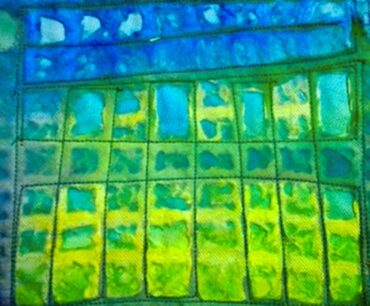
In the past, she has worked tirelessly in her gardens, completely landscaping more than an acre of land at one of the first homes she and Bruce shared when they moved to Gig Harbor. Now that she resides in a home with less land, instead of landscaping, she satisfies her need for beautiful plants and flowers by planting them in colorful pots around the property. Wagner believes that if she had the option to landscape, she would likely dive into it as she has in the past and it could become too much for her.
Wagner retired from her consultant work last year and now devotes her time to art. She is currently focused on two projects. One is a monthly series that takes her back to a love of open spaces, and the other is a collection of small mottainai pieces. Mottainai is a Japanese concept that Wagner interprets into her own work that expresses regret over waste. She uses scraps from larger pieces that she has made in the past to create small ones. Wagner started the series in January, and she said the collection has been selling. She enjoys working from her studio and getting her pieces of art out to people who appreciate it. Pieces range from $50 to $285.
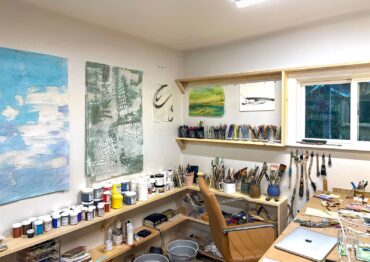 “Sales are not so important to me, but it does help cover the costs,” she said. “I don’t want to make things and have them go into a closet, so I love for it to go out to people.”
“Sales are not so important to me, but it does help cover the costs,” she said. “I don’t want to make things and have them go into a closet, so I love for it to go out to people.”
As with most human beings, and especially creatives, Wagner said that she began to doubt herself. So last year, she spent the whole year in a class that she admits she probably didn’t need. From that class, though, she found herself again.
“I went back to doing what I like,” she said. “I started looking at my old work and saying, ‘What do I want to do next with the Open Spaces series?'”
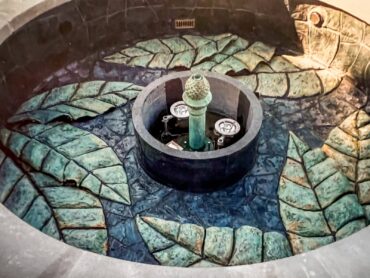 It’s open spaces, wide possibilities, the lack of appointments or demands and the freedom to create in her own way — in her own studio and for the love of making art — that keep her working as an artist.
It’s open spaces, wide possibilities, the lack of appointments or demands and the freedom to create in her own way — in her own studio and for the love of making art — that keep her working as an artist.
“Having a creative process of any kind has so many other benefits,” Wagner said.
Roberta Wagner’s collections, as well as her blog and her book, “Come Walk With Me: Exploring Why Art Matters,” are available at robertawagner.com.




